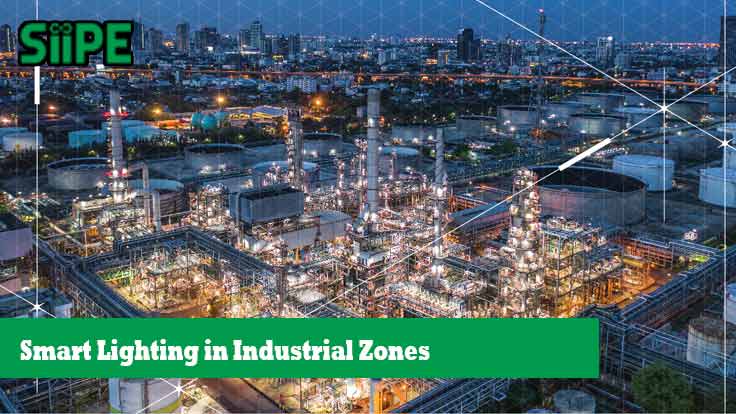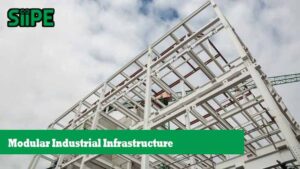Industrial zones play a vital role in national economies. They are centers of production, logistics, and employment. However, they also consume significant energy—especially in lighting. As industries shift toward sustainability and smarter infrastructure, smart lighting systems have emerged as a key innovation.
Smart lighting in industrial zones not only enhances visibility and safety but also dramatically reduces electricity consumption. This combination of functionality and efficiency makes it an essential component of modern industrial development.
What Is Smart Lighting?
Smart lighting refers to lighting systems that use advanced technologies such as sensors, automation, and connectivity to operate more efficiently. In industrial zones, smart lighting can automatically adjust brightness, respond to environmental conditions, and integrate with central management platforms.
Key features include:
-
Motion sensors to detect activity
-
Daylight harvesting to adjust based on natural light
-
Wireless controls via apps or centralized systems
-
Energy monitoring and analytics
-
Integration with IoT and smart grids
Why Industrial Zones Need Smart Lighting
Traditional lighting in industrial zones often relies on high-wattage fixtures that operate continuously, leading to unnecessary energy use and high costs. Smart lighting offers a strategic solution with several benefits.
1. Energy Efficiency
Smart lighting can reduce energy consumption by up to 70% compared to conventional lighting. Sensors ensure lights are only used when needed, and dimming controls prevent over-illumination.
2. Cost Savings
Lower energy use leads directly to reduced electricity bills. Furthermore, smart LED systems require less maintenance, lowering operational expenses over time.
3. Enhanced Safety and Security
Improved lighting enhances visibility in warehouses, roads, and loading docks—reducing accidents and deterring theft or vandalism during off-hours.
4. Environmental Sustainability
Reducing energy consumption helps lower carbon emissions. In eco-industrial parks, smart lighting is a key component of sustainable certification programs.
5. Smart Integration
Smart lighting can be integrated into broader industrial automation systems, allowing operators to manage lighting along with other systems from a centralized dashboard.
Technologies Behind Smart Industrial Lighting
Several technologies work together to make smart lighting in industrial zones effective:
1. LED Fixtures
LEDs are energy-efficient, long-lasting, and support features like dimming and color tuning. They are the backbone of most smart lighting systems.
2. Motion and Occupancy Sensors
These detect movement and turn lights on or off accordingly. Ideal for areas with intermittent activity such as storage zones or parking lots.
3. Light and Ambient Sensors
These adjust brightness in response to the amount of natural daylight available, ensuring optimal lighting without waste.
4. Wireless Controls and Automation
Systems can be scheduled or controlled remotely via apps, cloud platforms, or programmable logic controllers (PLCs).
5. IoT and Cloud Integration
Smart lighting systems collect usage data, enabling predictive maintenance, energy reporting, and integration with smart city infrastructure.
Implementation in Industrial Zones
Smart lighting implementation involves both retrofitting existing zones and planning for new developments. Here’s how it works in practice:
Step 1: Site Assessment
Engineers evaluate the zone’s lighting requirements based on size, activity, and usage patterns.
Step 2: Design and Planning
A customized lighting plan is created, considering sensor placement, fixture types, control systems, and connectivity.
Step 3: Installation
LED fixtures, sensors, and controllers are installed. Integration with energy or building management systems is performed.
Step 4: Monitoring and Optimization
After deployment, the system is monitored. Data insights allow managers to fine-tune performance and maximize efficiency.
Case Studies: Smart Lighting in Action
1. Cikarang Industrial Estate, Indonesia
Cikarang, one of the largest industrial parks in Southeast Asia, adopted smart street lighting to reduce energy costs and improve worker safety. The result: a 60% drop in lighting energy use and better nighttime security.
2. Rotterdam Port Industrial Zone, Netherlands
The Rotterdam port area uses motion-controlled lighting in warehouses and docks. This has improved operational efficiency while aligning with EU green energy goals.
Challenges in Smart Lighting Adoption
While the benefits are clear, some challenges must be addressed:
1. Initial Costs
Smart lighting requires investment in sensors, fixtures, and management systems. However, long-term savings usually offset these costs within a few years.
2. Technical Complexity
Integrating lighting systems with existing infrastructure or IoT networks requires skilled technicians and careful planning.
3. Data Security
As systems become more connected, protecting lighting data and controls from cyber threats becomes essential.
4. Maintenance and Upgrades
Although LEDs and smart systems are low-maintenance, software and firmware updates must be managed properly to ensure performance.
Government and Policy Support
In many countries, governments offer incentives to encourage smart infrastructure in industrial zones. These may include:
-
Tax deductions for energy-efficient upgrades
-
Grants for green industrial innovation
-
Regulatory guidelines promoting smart grid integration
-
Public-private partnerships to develop smart industrial estates
In Indonesia, for example, green industrial zones are part of national policy under Making Indonesia 4.0, where smart lighting plays a supporting role in digital transformation.
The Future of Industrial Lighting
Looking ahead, smart lighting in industrial zones will continue to evolve with trends such as:
-
AI-based adaptive lighting for dynamic environments
-
Integration with autonomous vehicles and drones
-
Use of solar-powered smart poles
-
Real-time energy trading via blockchain-enabled grids
As industrial parks grow larger and more complex, lighting systems must keep pace—offering reliability, flexibility, and intelligence.
Smarter Lighting, Smarter Industry
Smart lighting is more than a tool for visibility—it’s a strategic asset for efficiency, sustainability, and competitiveness. For industrial zone developers and tenants alike, investing in smart lighting means lower costs, safer environments, and alignment with green initiatives.
By embracing this technology, industrial zones position themselves at the forefront of smart infrastructure, ready to meet the demands of Industry 4.0 and beyond.











